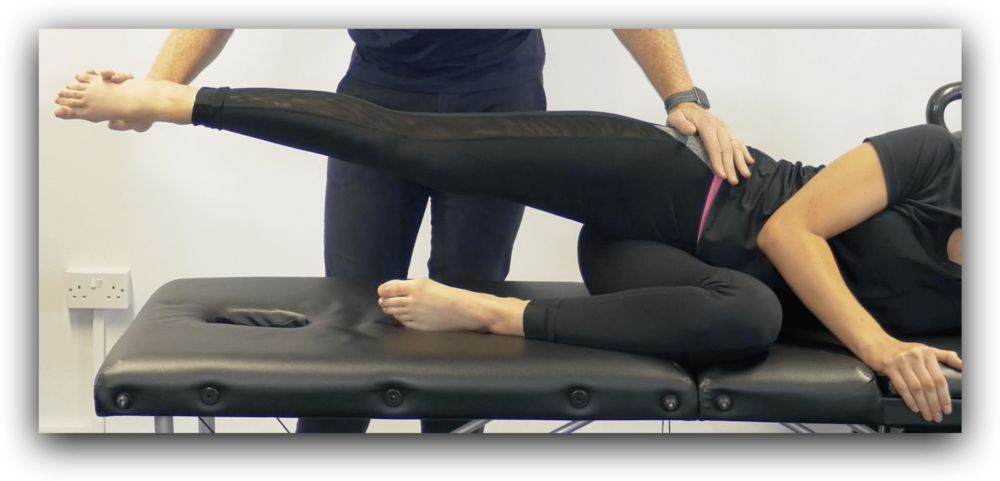How To Make Sense Of The Objective Assessment (Part 3) – Checking For The Ability To Tolerate Load In Specific Directions
After part 2 you should have a fundamental knowledge of our objective assessment and how your passive assessment can work within that.
Now it’s time to look at step 3 in our ‘3 layer approach’ and discuss more around how testing can help find the specific directions that your patient’s body cannot tolerate loading.
Perturbations that challenge our base of support can happen during all walks of life, especially in high-level sporting situations.
These perturbations happen sometimes at such high speeds that the higher centres of the brain don’t have time to process this information and so they rely heavily on the peripheral tissues’ ability to react and communicate with the spinal cord to maintain equilibrium.
When the foot hits the floor or the hand picks something up, the reality is that the reaction forces will be dealt with throughout the limb and not in one particular direction (sagittal anterior and posterior, frontal medial and lateral and transverse plane medial and lateral).
If a particular muscle or joint is getting overloaded, for example, the adductor, then my first question is why?
Is there another direction that the nervous system is protecting and sending forces in this direction that is now becoming symptomatic?
The motor adaptations to pain or a noxious stimulus are providing interesting insights into how the body can produce the same amount of force through a joint but change the direction of force slightly while also changing the fibres that produce the force (Tucker and Hodges, 2010).
To attempt to find the directions that the body cannot tolerate loading through now, the final part of the ‘3 layer approach’ is to put a perturbative load through the tissues and see the response of the nervous system.
However, rather than attempting to isolate a particular muscle, we will apply a pressure no more than 40% of your estimated maximal voluntary contraction through the foot or hand to see how the muscles of the foot, ankle, knee, hip and torso coordinate and manage this perturbative load in a given direction.
The biggest mistake for therapists who come on my mentorship initially is to think it’s a strength test and they apply pressure 100% and try to ‘beat’ the patient.

All I am interested in here is simply putting a load across a series of joints and checking how the muscles and other tissues within the body deal with this perturbatory load.
Put another way, what you are most interested in is the JOURNEY to the isometric contraction and maintaining voluntary control of the movement after the initial load (or perturbation) is applied to the limb.
The ‘Go-To’ Therapist is looking for whether a patient uses an immediate high threshold response to a simple task of meeting your pressure at no greater than 40%, or if they can slowly build tension in the muscle proficiently to counteract the load placed on the system by the tester.
This type of assessment approach may give you clues to the muscle’s passive and contractile components’ ability to generate torque to the task at hand and to send that force to the tendon while other muscles will be working synergistically to absorb movement errors in order to help the nervous system complete the process.
***APPLIED EXAMPLE*** If the patient has right-sided groin pain or a recurrent knee pain, yet the same side lateral hip in the posterior lateral direction struggled to generate force efficiently at submaximal levels, then you would still treat the tissues identified in steps 2 and 3 on the right side (20% of your attention) but your rehabilitation focus would be in giving back the body the ability to move with ‘thoughtless, fearless movement’ biasing the posterior lateral hip through a graded exposure programme (80% of your attention).
It is this approach that has allowed me to help numerous professional and non-sporting patients whose symptoms continued to return. It wasn’t until addressing the direction of loading that was inefficient and restoring movement options and variability of movement so the symptomatic side or direction so it did not have to perform excessive work, that the symptoms fully resolved.
***ANOTHER APPLIED EXAMPLE*** Another common scenario would be if the patient has right-sided groin pain or a recurrent knee pain yet the OPPOSITE side struggled to generate force efficiently at submaximal levels in a particular direction. You would still treat the tissues identified in steps 2 and 3 on the right side (20% of your attention) but your rehabilitation focus would be in giving back the body the ability to move with ‘thoughtless, fearless movement’ biasing the OPPOSITE leg through a graded exposure programme (80% of your attention).
This was the case with my professional golfer as mentioned in part 1 of this series. The key thing here is that there is a reason for the decreased motor output on the opposite leg which you will find in their injury history.
Presently in the ‘Go-To’ Therapist mentorship I have eight directions in the lower limb, five for the torso and four in the upper limb to build tension and to load these tissues submaximally in the objective assessment.
The hidden benefit of the 3rd layer is that you now have a minimum standard of load tolerance.
My ultimate goal in the first session is to restore the ability to tolerate load through these tissues at around 40% MVC in ALL directions.
When you have helped the patient move pain-free in whatever combination of objective tests you use, the reality is that they can tolerate loading these tissues at that load and that speed. That’s it. Just because they can do that does not mean you know they can tolerate the loads required to run, or whatever their goals are. But it gives you something to recheck on the next session so that you can see if they have maintained the progress or regressed again.
This becomes your first Key Performance Indicator (KPI) along with one or two others from the objective assessment.
If the patient leaves with the ability to tolerate load in whatever directions were missing but returns and has lost it again, then I know that either my rehab was too high level or they may have done something between sessions that stressed the system excessively and they have returned to that threatened state.
I would then question the patient about their activities and make sense of why they have lost the ability to tolerate load again in this particular direction.
As we progress the rehab and loading, we will again continue to always recheck these key directions every session as this is our BASELINE tolerance of loading before we progress to increased loading such as standing progressions etc.
This layer is hands down the one which gives me most clarity in terms of where I’ll be spending 80% of my attention.
When traditional approaches fail the problem in the majority of cases is that the clinician has done all the right things on paper in regards strengthening and loading generally but have just missed the directions that the nervous system needed most. I have seen this even when top class clinicians were involved.
I personally view this as a coordination problem as opposed to a strength problem as we can change the motor output very quickly with some appropriate hands-on treatment reassurance and rehab and witness instant changes in range of motion and other objective tests.
If we bring a strength solution to a coordination problem as most of these failed cases that come to me have had in their previous treatment plans, you will see the problem returning time and time again.
However when we offer reassurance through a step-by-step graded exposure and have the know-how to give the right stimulus at the right time, with the appropriate level of load tolerance, then changes can happen very quickly.
The findings of this layer combined with the other findings and making sense of these with the patient’s story would then lead you into effectively explaining your findings to the patient and designing an effective treatment plan.
Once you are clear on your objective assessment and our ‘3 layer approach’ continue on to pillar 3 and learn the importance of communication and effective explanation for complete patient ‘buy in’ and adherence to every exercise.
References mentioned in this page:
Tucker KJ, Hodges PW. Changes in motor unit recruitment strategy during pain alters force direction. Eur J Pain. 2010;14(9):932-8.


